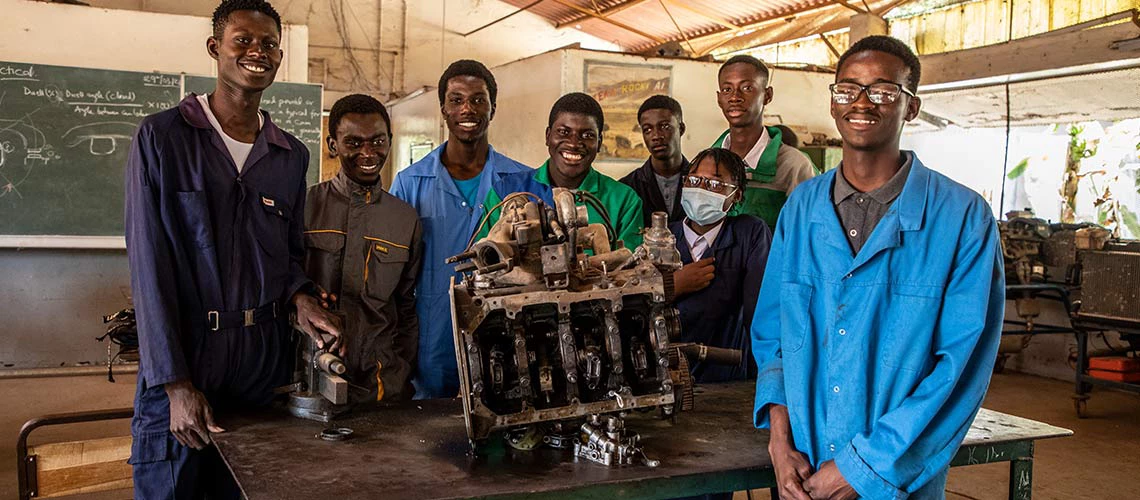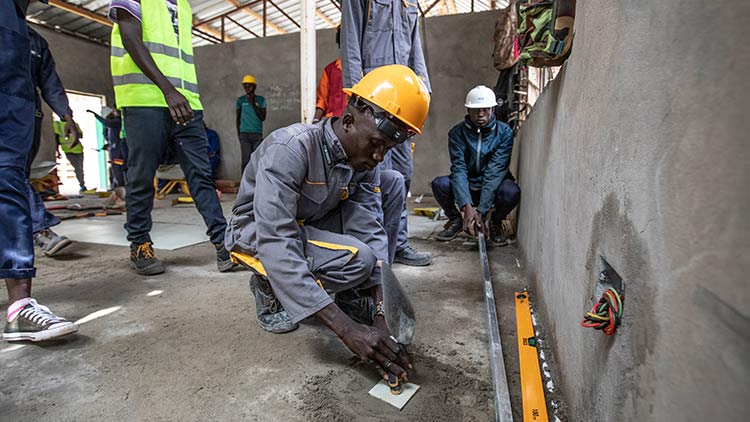 Gambia Technical Training Institute
Gambia Technical Training Institute
Over 60% of The Gambia’s population is at most 25 years old. Youth (15 -24 years) is a pivotal age at which core life decisions are made, and investments made in human capital materialize into lifelong outcomes. However, there are growing concerns about access to quality education, gainful employment, and a decent standard of living. In 2022, only 3.94% of Gambian students who sat the West African Senior School Certificate Examination (WASSCE) obtained credits in a minimum of five subjects, including English and Mathematics, which corresponds to the university’s entrance requirements. This proportion is very low; the analogous rate for Nigerian students was 76.36%. Almost 37% of young people are not in education, employment, or training (NEET). The youth labour force participation rate is low at 35% compared to 62.1% of ages 35-64. The challenges are numerous, multi-faceted, and require attention.

The World Bank’s Human Capital Review (HCR) for The Gambia, provides an overview of human capital challenges and opportunities across the lifecycle and offers a cross-sectoral approach towards greater prosperity. The report conducts a deep dive on youth1 and engaged 250 young people across the country on the themes of education, employment, migration, and perceptions of the future.
Youth value education but are concerned about quality and accessibility. Non-attendance can be driven by lack of accessibility and family circumstances, especially for girls. A female focus group discussant in Banjul argued: “some students are removed from school; some are asked to stop by their husband or families because their culture values marriage more than education”. Although child marriage is prohibited, it remains common: a quarter of young women aged 20–24 married early. Similarly, some children drop out of school because their families cannot afford uniforms and books, although basic education is free in public schools.

Technical and vocational education are seen as useful, but often out of reach. Technical and vocational education and training (TVET) can provide young people with practical skills for employment but need to be designed to meet employers’ demands: “TVETs are the future, […] we need more people with practical skills […] we also need to make sure that the curriculums of these TVETs are aligned with the market needs”. Youth do not think of office jobs as being normatively “better” than skilled work thanks to a growing recognition that employment requiring technical skills – mechanics, carpenters, builders, tailors – can offer more in terms of income and reliability. However, TVET centres only serve a small segment of the youth and are oftentimes inaccessible due to geographic distance and cost.
But focusing only on supplying youth with skills will only solve “half the problem.” For lack of a thriving business environment, jobs for youth tend to be in the informal sector. Faced with the burden of providing for relatives and challenges in securing quality jobs, youth mostly rely on the informal sector to make a living. Women face additional barriers to finding employment, especially in high-paying fields. Despite prohibiting discrimination in employment, one female respondent, Kanifing LGA, argues: “sometimes it is difficult for women to be employed, […]. Some institutions hardly employ women at a childbearing age having the belief that they can go for maternity leave at any time”.
While entrepreneurship can play an important role in helping youth secure jobs, “not everyone is an entrepreneur,” as one policymaker cautioned. Encouraging and supporting entrepreneurship should not stall efforts in building “companies and factories that create jobs”. There is a risk of putting the employment creation burden on the youth if entrepreneurship is considered the key to solving unemployment.
Strengthening human capital in The Gambia requires a whole-of-government and whole-of-World-Bank approach, with strong collaboration inside and outside of the human development sectors. As a representative for the National Youth Council (NYC) put it, “for entrepreneurship to work, the government also needs to do a lot to create a more enabling environment, not just giving them the cash and developing business skills.” This “enabling environment” is the other half of the problem and can only be achieved through cross-sectoral collaborations. By investing in people and making sure that human capital is built, utilized, and protected, we can pave the way for a brighter and more prosperous future for all.
1 This research was funded by the World Bank and carried out by the Center for Research and Policy Development (CRPD).




Join the Conversation